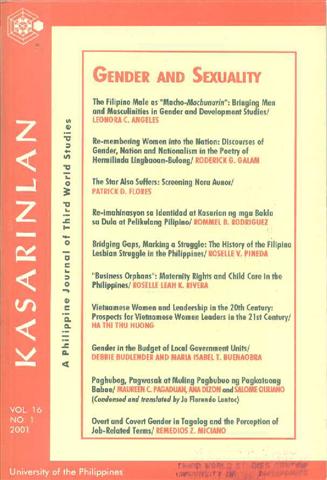Bridging Gaps, Making a Struggle: The history of Filipina Lesbian Struggle in the Philippines
Abstract
The author attempts to recover the lost history of the two-decade old lesbian struggle in the Philippines, to mark it in the larger historical map, and to explain its location within the various socio-political arenas. The problem is lesbian invisibility.Enforced heterosexuality, an institution imposed by the patriarchy, and violence committed against lesbians have forced them to keep their struggle invisible. Even with lesbian voices in the women's movement and the national democratic movement, the lesbian issue is not widely discussed. Women's issues are discussed along the lines of heterosexual concerns in relation to socio-economic conditions with lesbian concerns only peripheral. While feminism poses itself as a women oriented cause, it imposes certa.in heterosexual pattems that relegate lesbians to a dark corner. Lesbians also find themselves the humorless counterparts of the usually flamboyant male homosexual. In 1992, the movement achieved a breakthrough with the formation of the The Lesbian Collective (TLC) in Manila and its participation in the Women,'s March. Breakthroughs followed in Baguio and Davao, and the idea that lesbians can bond together to form a comprehensive collective nationwide slowly took shape. In 1996, the First National Lesbian Rights
Conference (FNLRC) was held. Now less invisible, the lesbian movement appears to be moving at a slow pace because the more active and outspoken bourgeosie leadership has very little or few inclination for grassroots organizing. Until it creates a mass base, the lesbian struggle will not transform into a movement.
Published
2008-09-18
Section
Features
By submitting a manuscript, the authors agree that the exclusive rights to reproduce and distribute the article have been given to the Third World Studies Center.



